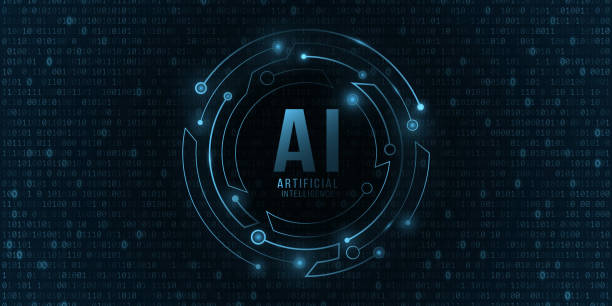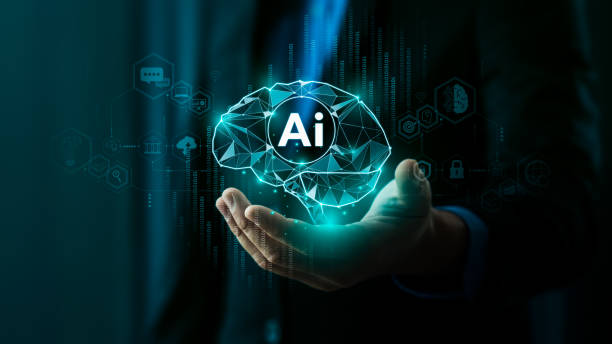What is Artificial Intelligence and What are its Applications?

Artificial Intelligence (AI) [Wikipedia] in short, is a branch of computer science that seeks to create systems capable of performing tasks that typically require human intelligence.
These tasks include learning, problem-solving, pattern recognition, reasoning, and decision-making.
#Artificial_Intelligence is not merely an abstract concept; it has wide-ranging applications in the real world.
Including:
- Medicine: Diagnosing diseases, developing new drugs and treatments.
- Automotive Industry: Developing self-driving cars.
- Customer Service: Answering customer questions via chatbots.
- Finance: Fraud detection, risk assessment, and capital management.
- Marketing: Personalizing advertisements and product recommendations.
Indeed, Artificial Intelligence is transforming almost every industry, and this trend is expected to continue in the future.
The use of Artificial Intelligence is no longer limited to large corporations; small and medium-sized businesses are also gradually benefiting from this technology.
The importance of Artificial Intelligence in daily and professional life is undeniable, and ignoring it would mean falling behind the march of progress.
Disappointed by your e-commerce site’s low conversion rate? Rasawab transforms your online store into a powerful tool for attracting and converting customers!
✅ Significant increase in visitor-to-buyer conversion rates
✅ Unparalleled user experience to boost customer satisfaction and loyalty⚡ Get a free consultation from Rasawab!
History and Evolution of Artificial Intelligence

The history of Artificial Intelligence dates back to the 1950s when scientists began exploring the possibility of building machines that could think.
One of the early milestones was the Turing Test in 1950, an experiment to assess a machine’s ability to exhibit intelligent behavior indistinguishable from that of a human.
In the 1960s and 1970s, AI research advanced with a focus on expert systems and logical reasoning.
However, due to funding shortages and hardware limitations, the field faced what was known as the “AI winter.”
In the 1980s and 1990s, with the emergence of machine learning and neural networks, interest in Artificial Intelligence was rekindled.
Hardware advancements and increased access to data allowed for the development of more complex models.
In the 21st century, Artificial Intelligence is rapidly developing with significant breakthroughs in deep learning, natural language processing, and computer vision.
Today, we witness widespread applications of Artificial Intelligence across various fields, and this technology has become an inseparable part of our lives.
Types of Artificial Intelligence: Approaches and Applications

Artificial Intelligence can be categorized into various types based on its capabilities and different approaches.
In terms of capability, Artificial Intelligence can be broadly divided into two categories:
- Narrow AI: This type of Artificial Intelligence is designed to perform a specific task and performs very well in that area.
Most AI systems used today are of this type, such as facial recognition systems or movie recommendation engines. - General AI: This type of Artificial Intelligence has the ability to understand, learn, and perform any task that a human can do.
We have not yet reached this level of Artificial Intelligence, but the goal of many researchers in this field is to achieve General AI.
In terms of approach, Artificial Intelligence can be divided into categories such as machine learning, neural networks, natural language processing, and computer vision.
Each of these approaches has its own specific methods and techniques for solving Artificial Intelligence problems.
The applications of Artificial Intelligence are vast and include fields such as medicine, automotive, finance, marketing, education, and entertainment.
Every day, new applications for Artificial Intelligence are discovered, and this technology is increasingly permeating our lives.
| Type of AI | Description | Example |
|---|---|---|
| Narrow AI | Designed for a specific task | Facial recognition system |
| General AI | Ability to perform any task a human can | Still under development |
Machine Learning and its Role in Artificial Intelligence

Machine Learning [Wikipedia] is one of the most important subfields of Artificial Intelligence that allows systems to learn from data without explicit programming.
In fact, in machine learning, instead of writing precise instructions to perform a task, an algorithm is provided to the system. This algorithm uses training data to identify patterns and relationships within the data, and based on these, makes new predictions or decisions.
There are various types of machine learning algorithms, including supervised learning, unsupervised learning, and reinforcement learning.
Machine learning plays a very crucial role in the development of Artificial Intelligence because it enables systems to automatically and continuously improve their performance and adapt to new conditions.
Many of the Artificial Intelligence applications we see today, such as facial recognition, voice recognition, product recommendations, and self-driving cars, are built upon machine learning algorithms.
Falling behind in competition with large online stores?
Rasawab, with professional e-commerce website design, brings your business online and increases your market share!
✅ Boost brand credibility and customer trust
✅ Easy shopping experience leading to more sales
⚡ Contact us now for a free website design consultation!
Neural Networks and Deep Learning

Neural Networks [Wikipedia] are computational models inspired by the structure of the human brain.
These networks consist of numerous interconnected nodes (neurons), and by passing data through these nodes, patterns and relationships within the data are identified.
Deep Learning is one of the most advanced branches of machine learning that uses deep neural networks (networks with many layers) to learn complex patterns in data.
In recent years, deep learning has brought about significant advancements in various fields of Artificial Intelligence, such as computer vision, natural language processing, and speech recognition.
For example, facial recognition and speech recognition systems used today in smartphones and other devices are built upon deep learning algorithms.
Deep learning enables systems to learn highly complex patterns using vast amounts of data and achieve very high accuracy in performing various tasks.
Natural Language Processing and Machine Understanding of Linguistic Concepts

Natural Language Processing (NLP) [Wikipedia] is a branch of Artificial Intelligence that enables machines to understand and process human language.
The primary goal of NLP is to create systems that can comprehend, analyze, generate, and translate text and speech.
NLP is used in various applications such as chatbots, machine translation, sentiment analysis, text summarization, and information retrieval.
Recent advancements in deep learning have significantly improved the performance of NLP systems.
For example, large language models like GPT-3 and BERT have the ability to generate very fluent and coherent texts and can answer complex questions.
Natural Language Processing plays a crucial role in human-machine interaction, allowing systems to communicate with humans naturally and intuitively.
Computer Vision and Image Recognition

Computer Vision [Wikipedia] is a branch of Artificial Intelligence that enables machines to see and interpret images and videos.
The primary goal of computer vision is to create systems that can identify and understand objects, people, scenes, and events in images and videos.
Computer vision is used in various applications such as self-driving cars, security systems, facial recognition, medical diagnosis, and quality control.
Recent advancements in deep learning have significantly improved the performance of computer vision systems.
For example, Convolutional Neural Networks (CNNs) have been very successful in object and image recognition.
Computer vision plays a crucial role in the automation and smartening of many processes, allowing systems to understand their surrounding world.
| Field | AI Application | Description |
|---|---|---|
| Medicine | Disease Diagnosis | Early cancer detection using medical images |
| Automotive Industry | Self-driving Car | Navigation and decision-making in driving without human intervention |
| Customer Service | Answering Customer Questions | Fast and 24-hour response to frequently asked questions |
Challenges and Limitations of Artificial Intelligence

Despite significant advancements in Artificial Intelligence, this technology still faces many challenges and limitations.
One of the most important challenges is the shortage of training data.
Machine learning algorithms require a large volume of training data to learn patterns within the data.
In many cases, collecting and labeling this data is a difficult and costly task.
Another challenge is the interpretability of Artificial Intelligence models.
Many deep learning models act like black boxes, and it’s not easy to understand how they arrived at a specific decision.
This reduces trust in these models in sensitive applications, such as medical and legal fields.
Furthermore, ethical issues related to Artificial Intelligence, such as bias, privacy, and security, are significant challenges that need to be addressed.
Finally, hardware limitations and energy consumption are also among the challenges facing the development of Artificial Intelligence.
How much does losing business leads due to an unprofessional website cost you? Solve this problem forever with professional corporate website design by Rasawab!
✅ Increase credibility and trust among potential customers
✅ Easier attraction of new business leads
⚡ Get a free consultation now!
The Future of Artificial Intelligence and its Impact on Human Life

The future of Artificial Intelligence is very bright and full of potential.
With continuous advancements in algorithms, hardware, and data, Artificial Intelligence is expected to play a much larger role in human life in the coming years.
Artificial Intelligence can help solve many of the world’s major problems, such as climate change, diseases, and poverty.
It can also lead to an improvement in the quality of human life, increased productivity, and the creation of new job opportunities.
However, it must be noted that the development of Artificial Intelligence should be carried out responsibly and with consideration for ethical issues.
It is necessary to establish laws and regulations to control and guide the development of Artificial Intelligence to prevent misuse of this technology and to ensure its benefits are fairly distributed among all members of society.
Overall, Artificial Intelligence is a powerful technology that can bring about massive transformations in human life, but it must be used with caution and appropriate planning.
How to Learn Artificial Intelligence?

Learning Artificial Intelligence requires a combination of theoretical knowledge and practical skills.
To begin, you can familiarize yourself with the basic concepts of Artificial Intelligence, such as machine learning, neural networks, and natural language processing.
There are many online educational resources, such as courses, books, and articles, available for learning these concepts.
After familiarizing yourself with the basic concepts, you can proceed to learn programming languages used in Artificial Intelligence, such as Python.
Additionally, learning Artificial Intelligence libraries and frameworks, such as TensorFlow, Keras, and PyTorch, is essential for implementing AI projects.
Furthermore, participating in practical projects and working with real-world data will help you strengthen your skills in Artificial Intelligence.
Also, attending Artificial Intelligence conferences and workshops allows you to become familiar with the latest achievements and technologies in this field and connect with experts.
Learning Artificial Intelligence is an ongoing process that requires effort and perseverance, but with proper planning and the use of suitable educational resources, you can become an Artificial Intelligence specialist.
Frequently Asked Questions
| Question | Answer |
|---|---|
| What is the definition of Artificial Intelligence (AI)? | It is a field in computer science that aims to create intelligent machines that can think, learn, solve problems, and make decisions like humans. |
| Mention some common applications of Artificial Intelligence. | These include self-driving cars, voice assistants (like Siri and Alexa), recommendation systems (like Netflix and Amazon), facial recognition, and medical diagnosis. |
| What is the difference between Narrow AI (ANI) and General AI (AGI)? | Narrow AI is specialized in a single, specific task, while General AI possesses human-level intellectual ability to perform any cognitive task. |
| What is Machine Learning and its relationship to Artificial Intelligence? | Machine Learning is a branch of Artificial Intelligence that focuses on developing algorithms that allow systems to learn from data without explicit programming. |
| What are Artificial Neural Networks? | They are computational models inspired by the structure and function of the human brain, used in deep learning to process data and discover complex patterns. |
| Mention some ethical challenges related to Artificial Intelligence. | These include issues of privacy, bias in data and algorithms, job displacement, and accountability in case of errors or unfair decisions. |
| What is Natural Language Processing (NLP)? | It is a branch of Artificial Intelligence that focuses on enabling computers to understand, interpret, and generate human language in a useful and interactive way. |
| How can Artificial Intelligence affect the job market? | It can lead to the automation of some routine tasks, requiring worker retraining and creating new jobs in the areas of designing, developing, and maintaining AI systems. |
| What is Computer Vision? | It is a field in Artificial Intelligence that enables computers to “see,” understand, and interpret images and videos in the same way humans do, allowing them to recognize objects and faces. |
| What is the importance of data in developing Artificial Intelligence systems? | Data is the fuel that powers Artificial Intelligence systems, especially in machine learning. The quality and quantity of data significantly affect the accuracy and performance of models and their ability to learn and make correct decisions. |
And other services of Rasawab Advertising Agency in the field of advertising
- Smart Digital Advertising: A combination of creativity and technology for customer acquisition through marketing automation.
- Smart Direct Marketing: A blend of creativity and technology for campaign management through custom programming.
- Smart Content Strategy: Revolutionize click-through rates with the help of Google Ads management.
- Smart SEO: A mix of creativity and technology for digital branding through user experience customization.
- Smart UI/UX: Professional optimization for customer acquisition using user experience customization.
And hundreds of other services in the field of internet advertising, advertising consulting, and organizational solutions.
Internet Advertising | Advertising Strategy | Advertorials
References
What is Artificial Intelligence?
Applications of Artificial Intelligence in Daily Life
Comprehensive Artificial Intelligence Training Course
The Future of Artificial Intelligence: Beyond Our Imaginations
? For your business to soar in the digital space, Rasawab Afarin Digital Marketing Agency is with you. By utilizing the latest online marketing methods, from SEO and content creation to website design with a modern user interface, we offer comprehensive and results-oriented solutions for greater visibility and attracting loyal customers. Let our expertise pave your path to digital success and help you achieve your goals.
📍 Tehran, Mirdamad Street, next to Central Bank, Southern Kazeroun Alley, Ramin Alley, No. 6


